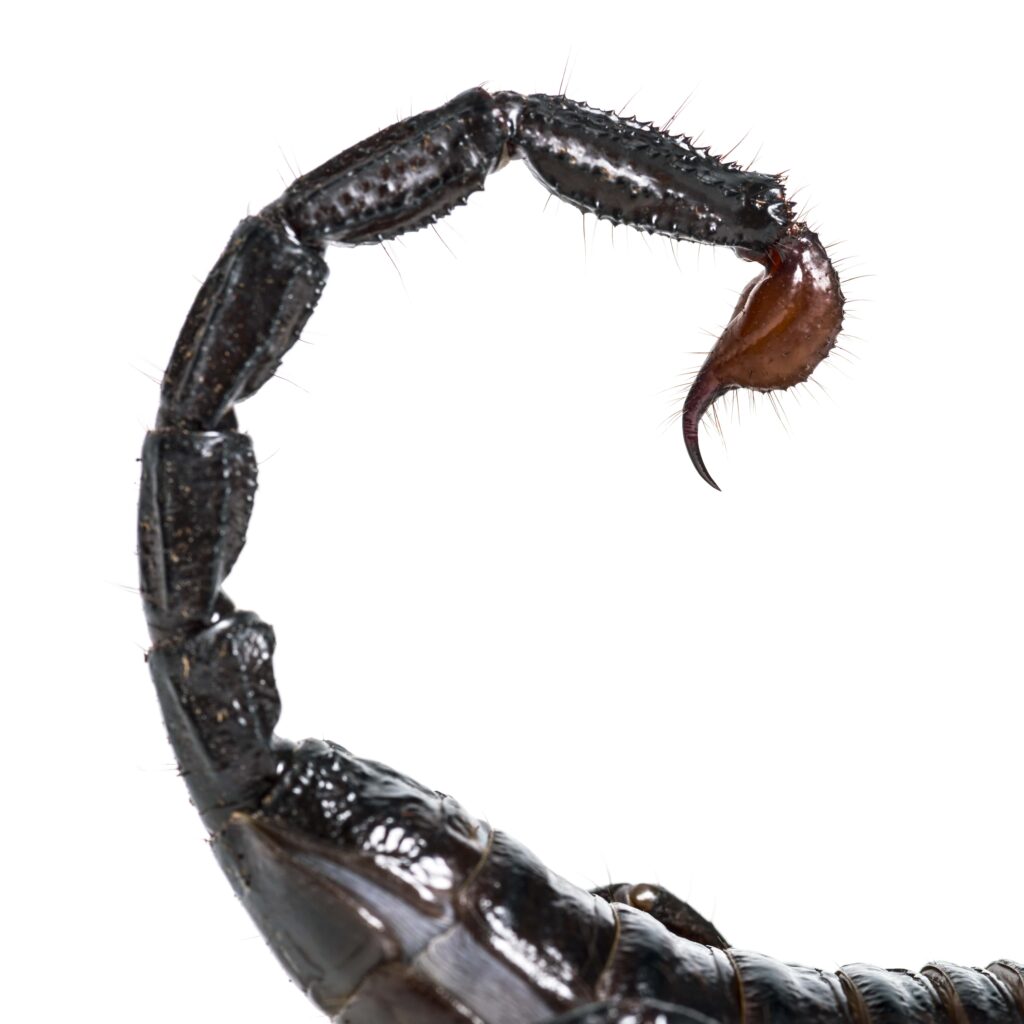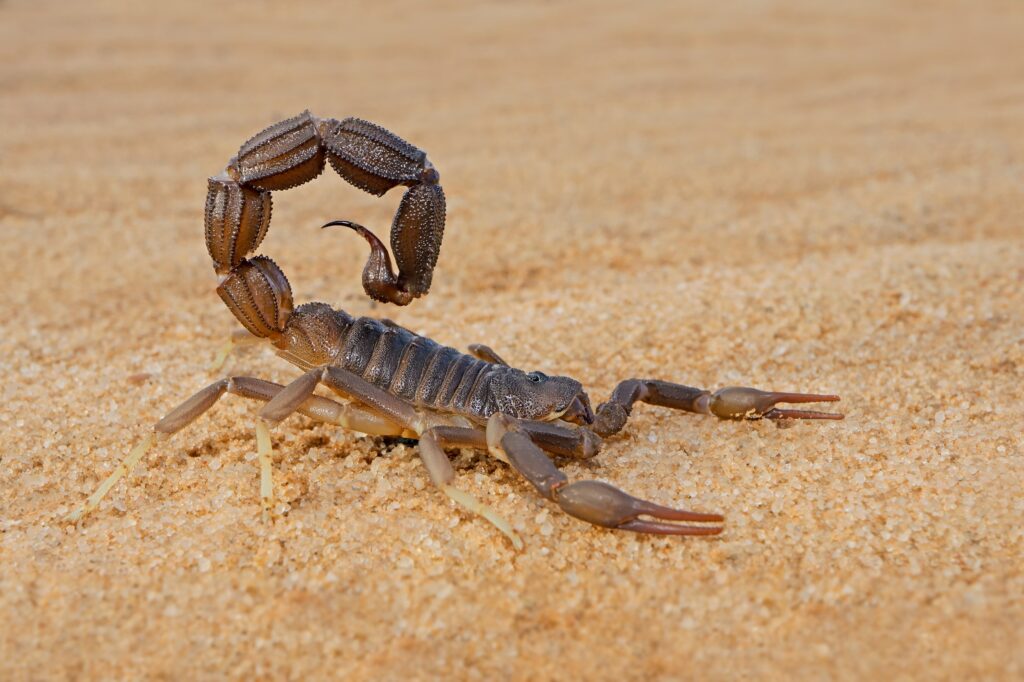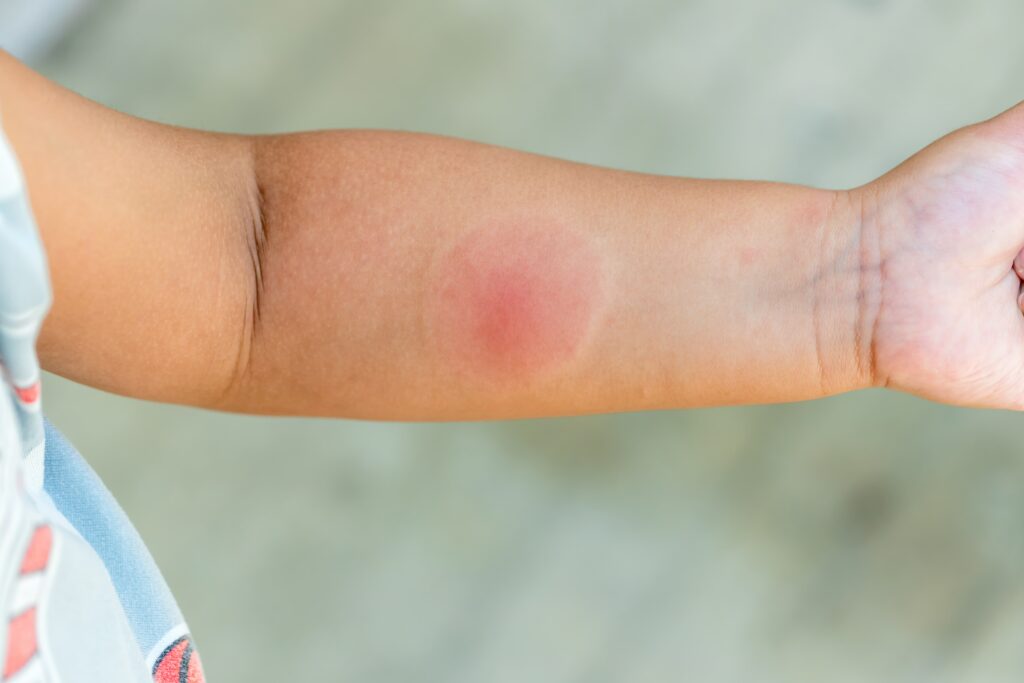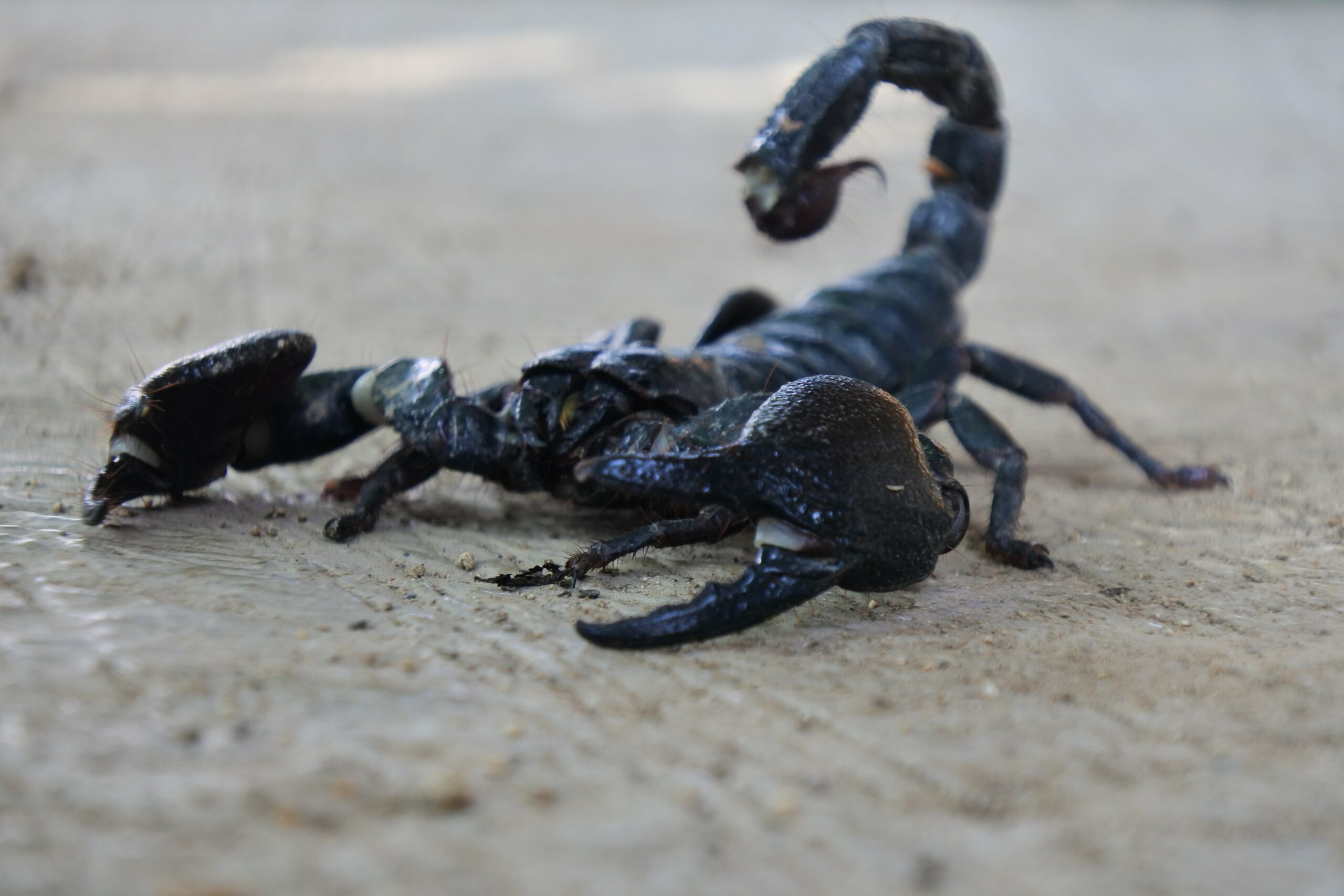The Mysterious World of Scorpions in Las Vegas
In the vast expanse of the Mojave Desert, where shimmering heatwaves dance across endless stretches of golden sand, a remarkable creature quietly roams: the scorpion. Las Vegas, known for its vibrant nightlife and bustling entertainment industry, also houses these intriguing arachnids. Though they may not be in the spotlight like famous performers on the Strip, scorpions have earned their own slice of notoriety among locals and visitors alike.
Let’s embark on a journey to discover more about these enigmatic creatures lurking in Sin City. Scorpions belong to the Arachnida class, which includes spiders and ticks.
While spiders tend to spin intricate webs to capture prey, scorpions are more active hunters. They possess a fearsome pair of pincers called pedipalps that help them seize their unsuspecting victims.
Furthermore, most scorpion species have a telltale curved tail ending in a venomous stinger—a feature found in scorpions that often leads people to associate them with danger and poison. Contrary to popular belief, not all scorpion species found in Las Vegas are venomous or harmful to humans.
In fact, out of approximately 2,000 known species worldwide, only about 30 pose significant risk to human health. The most common scorpion species encountered in Las Vegas is the desert hairy scorpion (Hadrurus arizonensis).
With its olive-green coloration and size averaging around 4–6 inches long (including tail), it is an imposing sight for those who come across it unexpectedly. Next time you find yourself face-to-face with one of these fascinating creatures during your nocturnal wanderings through Sin City’s outskirts or even inside your home—yes, they can venture indoors—it is essential to keep calm and remember that not all scorpions in Las Vegas are venomous.
While their sting is undoubtedly unpleasant, it is typically comparable to that of a bee or wasp. However, certain species, such common species such as the Arizona bark scorpion (Centruroides sculpturatus), possess more potent venom, which can cause severe pain and other symptoms if stung.
Now that we have scratched the surface of this mesmerizing topic, let’s dive deeper into the captivating world of venomous scorpions in Las Vegas. Understanding common scorpions, their behavior, habitats, and potential dangers they pose will equip us with valuable knowledge to coexist harmoniously with these intriguing creatures in our desert oasis.
Definition of Venom and its Purpose in Scorpions

Scorpions, those intriguing arachnids that roam the Las Vegas area, possess a remarkable defense mechanism in the form of venom. Venom can be defined as a toxic substance produced by certain animals, including scorpions, which is injected into their prey or predators. For some types of scorpions, venom serves multiple functions crucial for their survival.
Firstly, it aids in subduing and immobilizing their prey so that they can feed on it at leisure. Secondly, venom helps scorpions defend themselves when they feel threatened by other creatures or humans attempting to handle them.
It is important to note that while scorpion venom has its role in their ecological niche, not all venomous creatures are inherently poisonous to other insects. The distinction lies in how the venom is transferred to another organism.
In the case of scorpions and various other venomous animals like snakes or spiders, the delivery mechanism is typically through fangs or stingers directly injecting the venom into their target. Therefore, we refer to these animals as “venomous.” On the other hand, “poisonous” creatures are those whose toxins are dangerous if ingested or absorbed through touch or consumption.
Explanation of the Difference between Venomous and Poisonous Creatures
To further clarify this distinction between venomous and poisonous organisms: imagine encountering a scorpion in your Las Vegas property—an unpleasant surprise indeed! If you were accidentally stung by that scorpion found lurking near your doorstep (perhaps a desert hairy scorpion or even a striped tree bark scorpion), you would experience the effects of its potent venom firsthand.
In this case, we label the creature as “venomous.” In contrast, consider stumbling upon some brightly colored mushrooms during a hike in the picturesque outskirts of Las Vegas.
If one were to consume these mushrooms (which we strongly advise against without expert guidance), the toxic substances within them would be “poisonous” to your system. In essence, venomous creatures deliver their venom actively, while poisonous organisms contain toxins passively and pose a threat if ingested or absorbed.
By distinguishing between these two terms—venomous and poisonous—we can better appreciate the fascinating nature of scorpions in Las Vegas and other scorpion species worldwide. Understanding their venom and its purpose opens up a whole new realm of appreciation for these unique arachnids.
Venomous Scorpion Species in Las Vegas

In the arid landscape of Las Vegas, scorpions have made their presence known. Among them, two venomous species stand out: the Arizona bark scorpion (Centruroides sculpturatus) and the desert giant hairy scorpion (Hadrurus arizonensis). These formidable creatures are often encountered in and around Las Vegas homes, making it crucial to familiarize ourselves with their physical characteristics and habitats.
The Arizona bark scorpion, notorious for its potent sting, measures around 2-3 inches in length. With its light brown coloration and slender segmented body, it can be quite difficult to spot amidst its surroundings.
On the other hand, the desert hairy scorpion is larger than its bark-scorpion counterpart, reaching about 5-6 inches long. Its name aptly describes its appearance – covered in tiny hairs that give it a fuzzy texture.
Description of Their Physical Characteristics and Habitats
While both species of emperor scorpion are adept predators, they possess distinct traits that set them apart. The Arizona bark scorpion has long thin pincers, enabling it to capture prey efficiently. Its tail is narrow and curved upwards with a stinger at the end – a weapon carefully crafted to deliver venom when threatened or attacking other bugs.
In contrast, the desert hairy scorpions showcase bulkier bodies with formidable claws designed for grappling their prey. They also possess a thick tail armed with venom-filled stingers.
These creatures tend to prefer cooler and more moist environments than their desert-dwelling counterparts. When it comes to habitats, these venomous scorpions can be found lurking beneath rocks, logs, or any dark crevices they can squeeze into during daylight hours.
At nightfall, they venture out to hunt for insects such as spiders and other arthropods. Las Vegas homeowners should remain cautious, especially in areas where scorpion sightings are common, taking necessary precautions to avoid encounters with these venomous species.
The Sting: How Scorpions Deliver Venom

To understand how scorpions deliver venom through their stingers, it’s crucial to delve into their fascinating anatomy. A scorpion’s stinger is an extension of its abdomen and is located at the end of its tail.
This tail consists of several segments, including the metasoma, where the venom gland resides. The stinger itself is a modified exoskeletal structure known as a telson.
It contains a sharp pointed tip that enables the scorpion to puncture its prey or defend itself effectively. The venom gland is connected to the stinger by a duct, allowing for precise venom delivery during sting deployment.
Scorpions employ their stingers both as formidable weapons in hunting and as a means of defense against potential threats. When hunting, these arachnids patiently lie in wait for unsuspecting prey.
Once an opportunity arises, they strike with lightning speed, utilizing their powerful pincers to immobilize their victim while simultaneously injecting venom through their sting. For defense purposes, scorpions rely on their ability to sense vibrations in their environment.
When threatened by predators or humans inadvertently encroaching upon their territory (such as in Las Vegas properties), scorpions may raise their tails in warning before resorting to employing their stingers as a last line of defense. It is worth noting that not all scorpion species possess equally potent venom or use it with equal aggression when compared to other species like the Arizona bark scorpion or emperor scorpions commonly found scorpions from elsewhere.
However, caution should always be exercised when encountering any scorpion – even those deemed less dangerous – as individual reactions and susceptibility can vary greatly from person to person. Remember, if you ever find yourself on the receiving end of a scorpion sting, seeking immediate medical attention is advisable, especially if you are uncertain about the species’ venom potency or have concerns about potential allergic reactions.
Effects of Scorpion Venom on Humans
When it comes to scorpion stings, one cannot underestimate the potency of their venom. The effects experienced by humans who fall victim to these arachnids can range from mild discomfort to severe complications. The immediate aftermath of a scorpion sting typically includes localized pain and swelling at the sting site and of contact.
Imagine an intense, burning sensation that could bring even the bravest among us to tears. This excruciating torment can last for several hours, gradually subsiding as your body’s defenses go into action.
But that’s not all – scorpion venom takes pleasure in prolonging your misery. Alongside the initial agony, victims of a bark scorpion sting often report experiencing tingling or numbness around the affected area.
As if nature’s malevolence is not satisfied with mere physical torment, some unfortunate souls may also suffer muscle spasms or cramps throughout their bodies. These involuntary contractions can be particularly distressing and may persist for hours, transforming a seemingly harmless encounter into a harrowing experience.
The Sting That Leaves You Breathless: Allergic Reactions & Severe Complications

While most scorpions found in Las Vegas are not life-threatening to humans, allergic reactions following a sting can compound the already unpleasant experience. Some individuals may display symptoms akin to an allergic response, such as hives or itching all over their body. In severe cases, breathing difficulties may arise due to significant swelling in the throat or tongue – an alarming situation that demands immediate medical attention.
Yet for those truly unlucky few who encounter venomous species like the notorious Arizona bark scorpion within their Las Vegas property, more serious complications can arise. Beyond enduring excruciating pain and localized swelling that spreads beyond its point of origin, victims might experience increased heart rate and blood pressure, accompanied by profuse sweating.
In rare instances, this toxic onslaught can lead to neurological symptoms, including blurred vision, slurred speech, and uncontrollable eye movements. These alarming complications should never be taken lightly and require urgent medical intervention.
As you venture through Las Vegas or even within the sanctuary of your Las Vegas home, it is essential to remain vigilant. While most scorpions encountered in the area may cause nothing more than temporary discomfort, understanding the potential effects of their venom on humans is crucial.
By familiarizing ourselves with these symptoms and potential complications, we can approach encounters with scorpions armed with knowledge and take necessary precautions to mitigate their impact on our lives. Stay informed and prepared – for even in a city known for its glitz and glamour, nature’s olive-green creatures can wield a sting that leaves us humbled.
Severity Levels: Determining Poisonousness
Exploring the Venom Potency: The Scoville Scale
When it comes to determining the poisonousness of scorpions, understanding venom potency is essential. The Scoville scale, commonly used to measure the heat of peppers, can also be applied to determine the strength of scorpion venom.
It assesses the number of Scoville Heat Units (SHU) produced by capsaicin, the chemical responsible for heat in peppers. In a similar manner, scientists use this scale to gauge the potency of scorpion venom.
A Global Perspective on Venom Potency
While Las Vegas is home to some venomous scorpions, it is important to note that their venom does not reach the levels seen in other highly dangerous species worldwide. For example, the notorious bark scorpion found in Arizona and parts of Mexico possesses a much higher toxicity level than most other scorpions. In comparison to bark scorpions, Vegas scorpions have weaker venom that generally poses a lower risk to humans.
Precautions for Dealing with Scorpions
Avoiding Encounters in Residential Areas
Prevention is key when it comes to dealing with scorpions in residential areas. To minimize encounters prevent scorpions and maintain a family-safe living environment, there are several practical tips you can follow. Start by sealing any cracks or openings in your property where these arachnids might enter from outdoors.
Additionally, keep your yard well-maintained by removing debris or woodpiles that may attract pests. Regularly inspect both indoor and outdoor areas for any signs of infestation.
Protecting Yourself from Potential Stings
When it comes to protecting yourself from potential stings while living in an area prone to scorpion activity like Las Vegas, there are a few precautions to consider. First and foremost, always wear protective clothing, such as long sleeves and pants, when working or exploring areas where scorpions might be present. Utilize gloves when handling rocks or debris that could harbor scorpions.
Additionally, shake out shoes or other items that have been left outdoors before putting them on. Taking these simple measures can significantly reduce the risk of encountering a scorpion and potentially being stung.
Treating a Scorpion Sting

First Aid Measures after a Sting Occurs
If you are unfortunate enough to experience a scorpion sting, immediate first aid is crucial. Start by cleaning the affected area with mild soap and water to prevent infection.
Apply a cold compress or ice pack wrapped in cloth to reduce pain and swelling. Over-the-counter pain relievers can help alleviate discomfort until medical attention is sought if necessary.
Overview of Available Medical Treatments
While most scorpion stings cause only minor symptoms in humans, severe cases may require medical attention. In such instances, it is important to seek professional care promptly. Depending on the severity of the sting and individual reactions, healthcare providers may administer antivenom or other medications to treat symptoms effectively.
Myth vs Reality: Separating Facts from Fiction
Clearing Up Common Misconceptions
It is essential to address some common misconceptions about the danger posed by Vegas scorpions and provide factual information for accurate understanding. While Las Vegas has its fair share of dangerous scorpions, like the striped bark scorpion (a commonly found species in the area), not all of them are poisonous enough to pose significant harm to humans. It’s important not to panic but rather approach scorpion encounters with caution.
Promoting Understanding for Safer Coexistence
By providing accurate information on scorpions and debunking myths, we can promote a safer coexistence with these intriguing arachnids. Understanding their habits, behavior, and the appropriate precautions to take empowers individuals to effectively manage any potential scorpion problem they might encounter.
With knowledge in hand, we can navigate our surroundings confidently, appreciating the wonders of nature while keeping ourselves and our loved ones safe. Conclusion:
While scorpions in Las Vegas may be a concern for some residents due to their presence and occasional stings, it is important to understand that most Vegas scorpions have weak venom. Comparatively speaking, they do not possess the same level of poisonousness as highly of most venomous scorpion species found elsewhere in the world.
By following precautions to avoid encounters with scorpions in residential areas and knowing how to treat a sting if it occurs, individuals can effectively protect themselves from potential harm. Let us embrace knowledge as our shield and coexist harmoniously with the diverse wildlife surrounding us in the Las Vegas area.
Triumph Over Scorpions with D-Termination: Las Vegas’ Top Pest Control Choice!

Anxious about scorpions infiltrating your Las Vegas property? D-Termination is your solution. Our skilled team is focused on eradicating these hazardous pests, ensuring security in your area. Bid farewell to scorpion concerns—select D-Termination for reliable pest control now!
Connect with us at 702-919-6310 or visit dtermination.com to reserve your scorpion control service and regain your space from these unsettling pests.
Frequently Asked Questions:
Scorpions in Las Vegas can be a potential threat, especially for vulnerable individuals.
Scorpions in Nevada can possess venom of varying potency, causing different reactions in humans.
The parts of Las Vegas with the highest scorpion populations are typically suburban areas near desert landscapes.
Dealing with scorpions in Las Vegas involves measures like sealing entry points, reducing moisture, and using scorpion repellents or professional pest control services.








